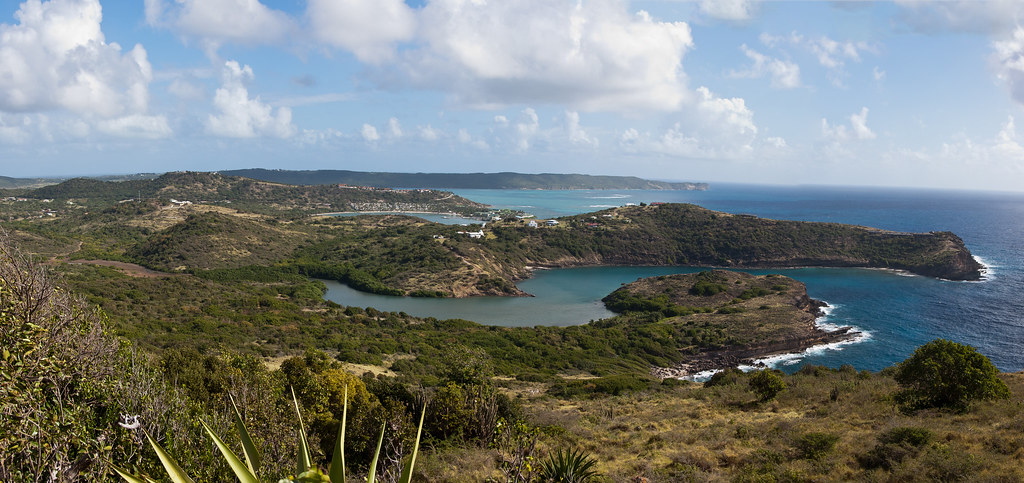
Above: A view of the south of the island.
Antigua means "ancient" in Spanish and was named by Christopher Columbus after an icon in Seville Cathedral, Santa Maria de la Antigua — St. Mary of the Old Cathedral. The island measures 108 square miles and has a population of about 90,000. The economy is mainly reliant on tourism, with the agricultural sector serving the domestic market.
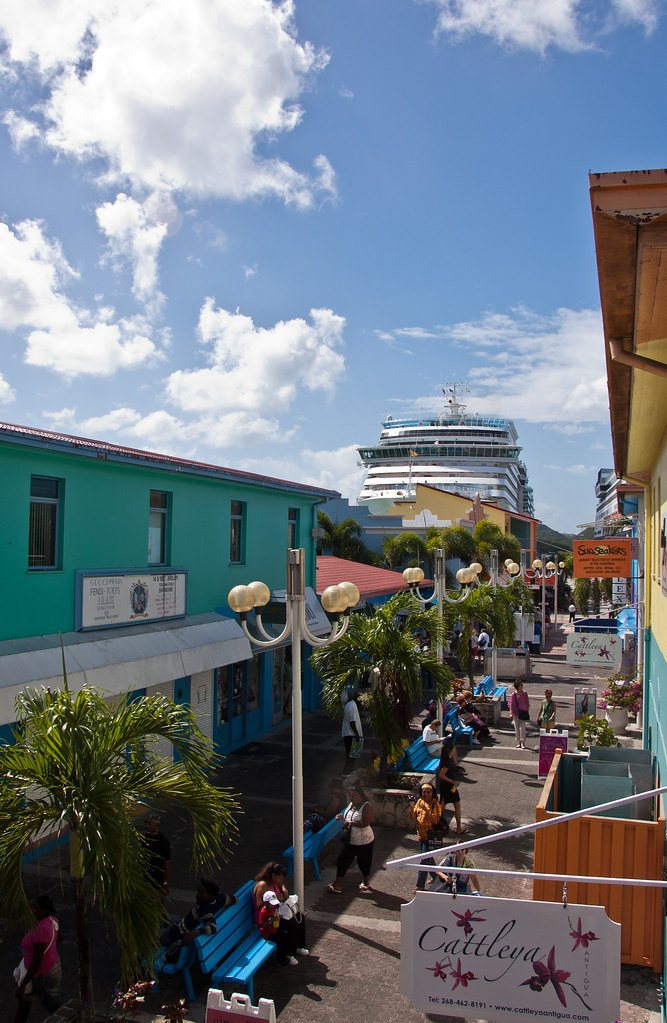
Above: The cruise ship terminal at St John's - the main town on Antigua - with a Costa ship (sister to the sunk Concordia) in the centre and the Maasdam just visible on the right.
Over 31,000 people live in the capital city, St. John's which is situated in the north-west and has a deep harbour which is able to accommodate large cruise ships.

Above: Colourful buildings are adorned with motifs and artwork in downtown St John's.
Following Columbus' discovery of Antigua during his 1493 voyage, a group of English colonists established the first permanent European settlement on the island in 1632. They developed the island as a profitable sugar colony and for a long time the island was considered Britain's "Gateway to the Caribbean" as it was located on the major sailing routes among the region's resource-rich colonies.
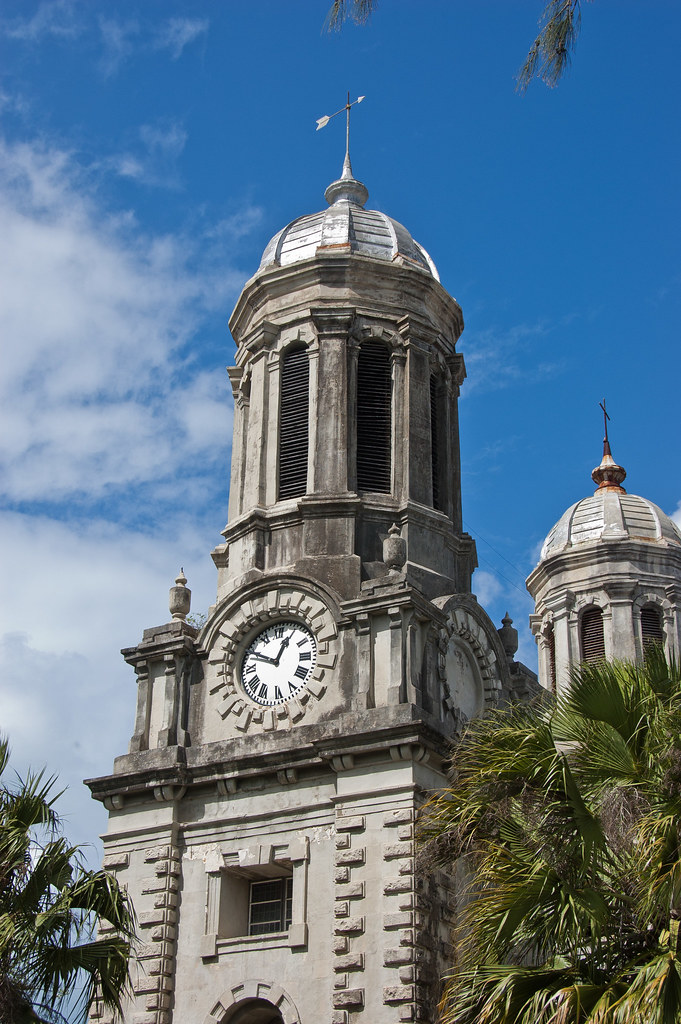
Above: St John's Cathedral, just a few blocks from the cruise terminal.
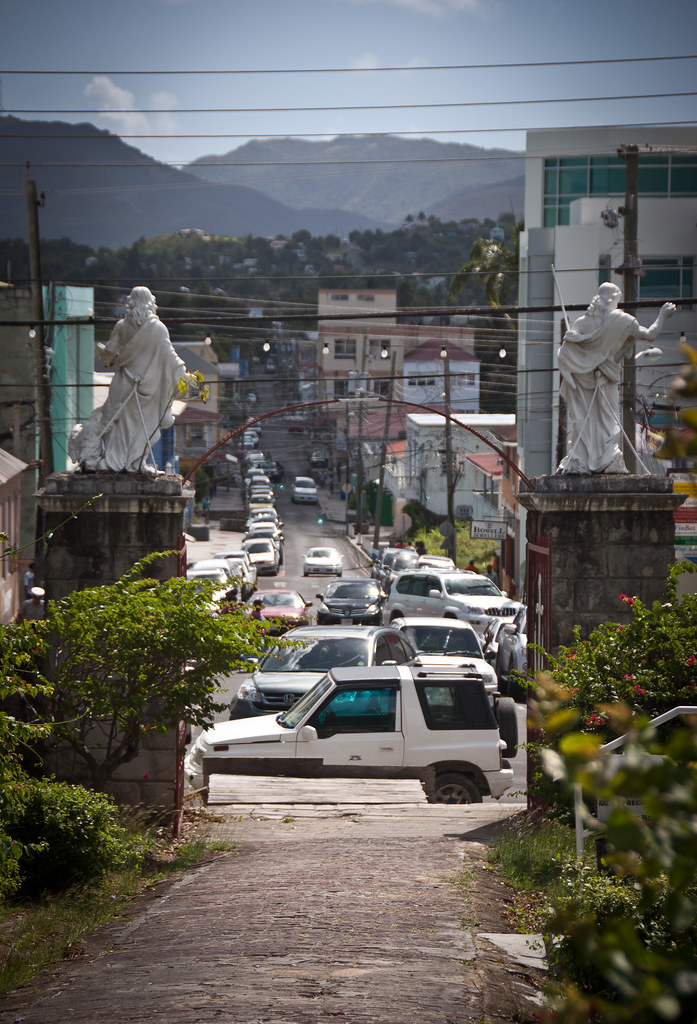
Above: Downtown St John's as viewed through St John's Cathedral gates.
Lord Horatio Nelson, a major figure in Antigua history, arrived in the late 18th century to preserve the island's commercial shipping prowess. Nelson was Senior Naval Officer of the Leeward Islands from 1784 to 1787 on the H.M.S. Boreas.
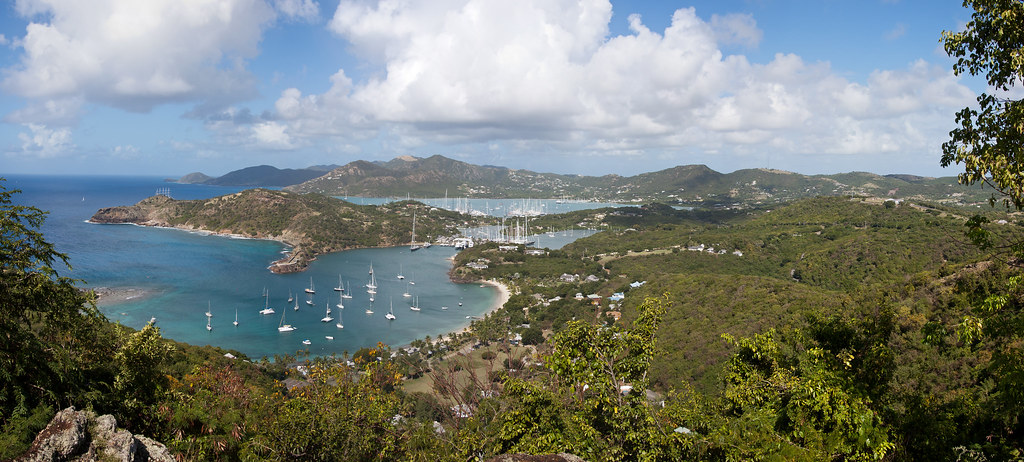
Above: English Harbour with Nelson's Dockyard in the centre of the picture.
English Harbour on the south-eastern coast is famed for its protected shelter during violent storms. It is the site of a restored British colonial naval station called Nelson's Dockyard.
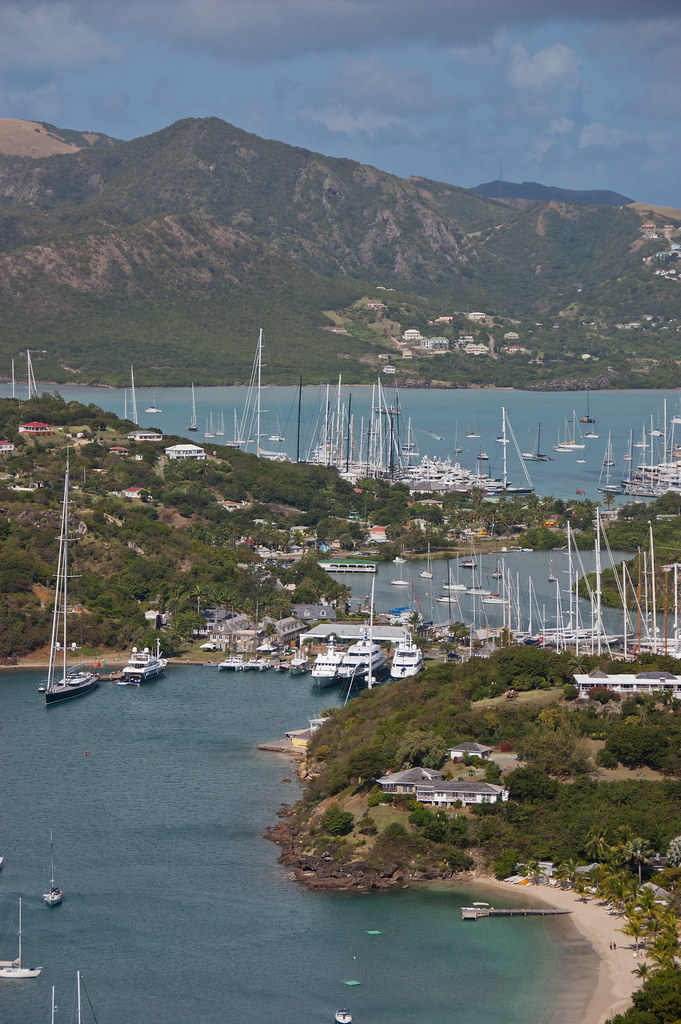
Above: Nelson's Dockyard.
The above two pictures were taken from the Royal Artillery Guard House, located across the harbour on the southernmost point of Antigua. The occupants of the Guard House were responsible for maintaining the four guns on the gun platform and the signal station (like a lighthouse).
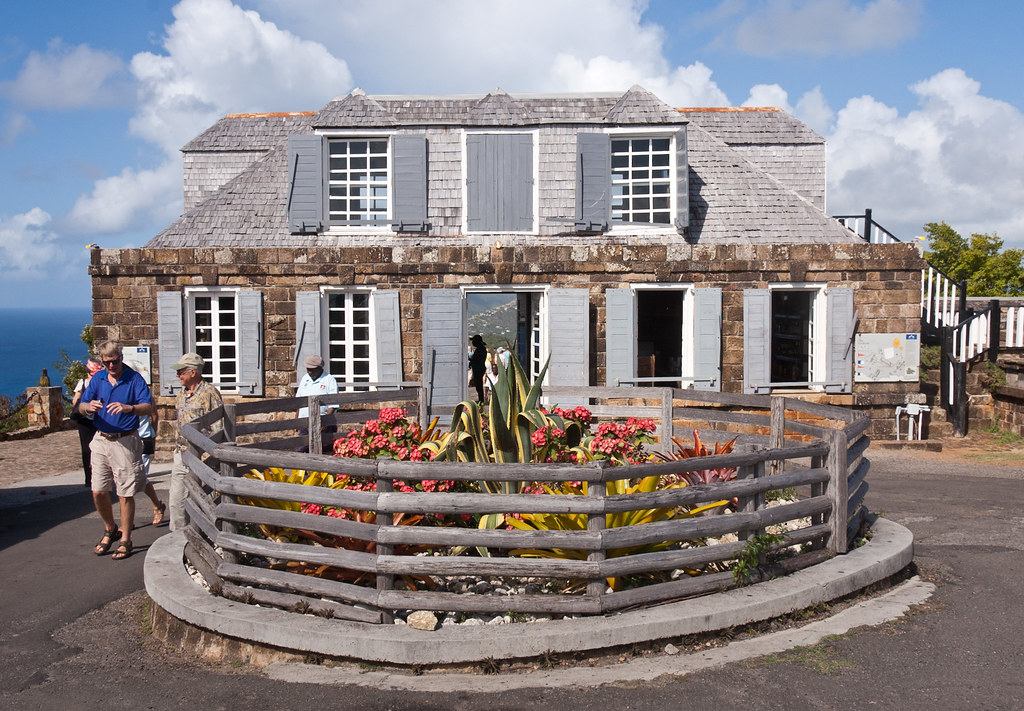
Above: The Royal Artillery Guard House
We then went to Nelson's Dockyard for a visit.
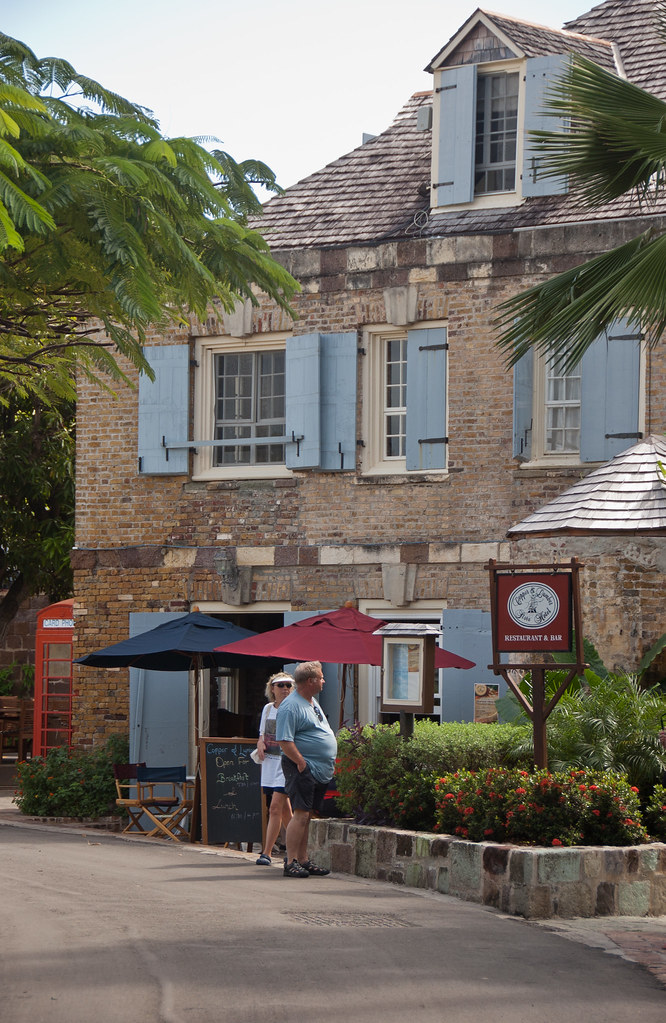
Above: One of the restored buildings (with a red telephone box!) at the Dockyard.
Today English Harbour and the neighbouring village of Falmouth are internationally famous as a yachting and sailing destination and provisioning centre.
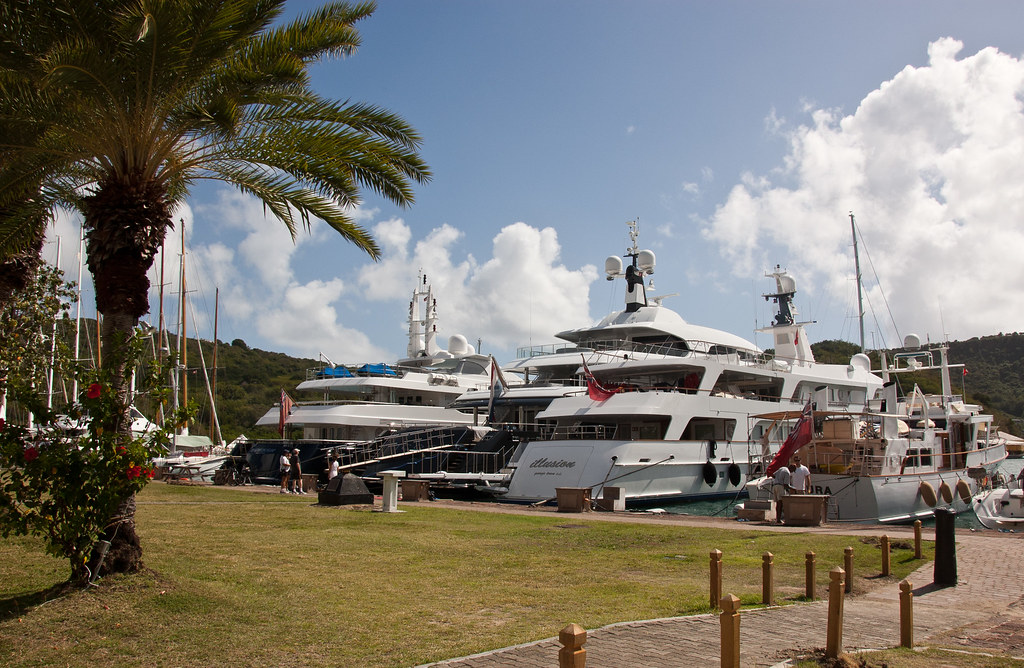
Above: Just a few of the private boats at the dockyard!
A lot of famous people have houses on the island, including Silvio Berlusconi, Richard Branson, John Barrowman, Timothy Dalton and Eric Clapton. You'll have to look carefully, but if you go back to the first photo of this blog, you might spot Eric Clapton's mansion on the far right of the photo or his drug treatment centre which is located on the third spit of land, second from the back. Close-ups are below:
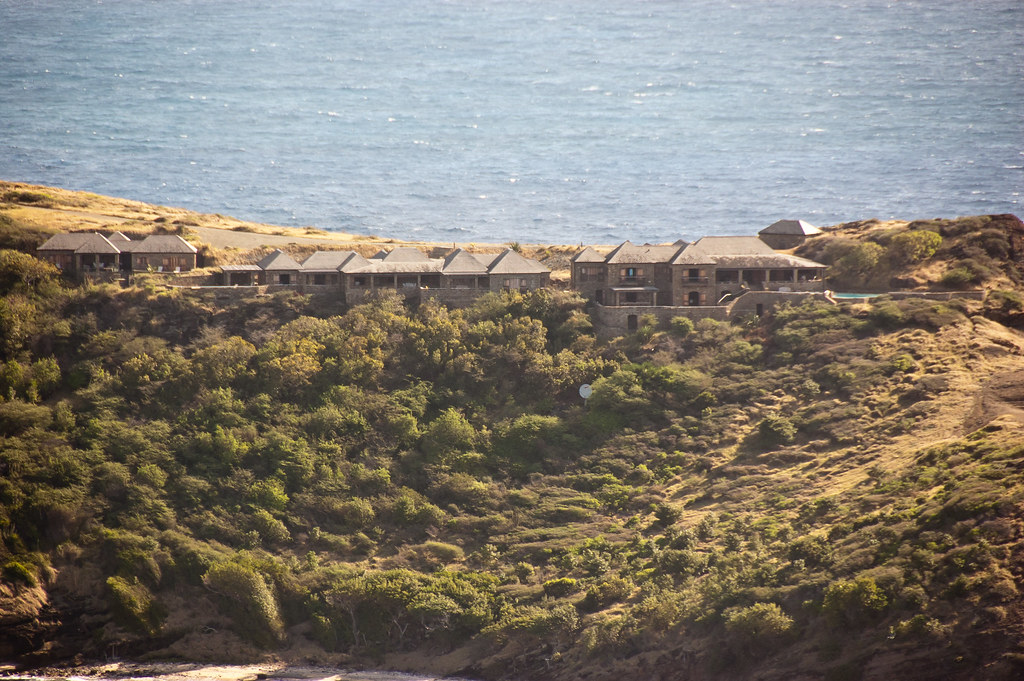
Above: Eric Clapton's mansion, located on the south of the island. It is very remote!
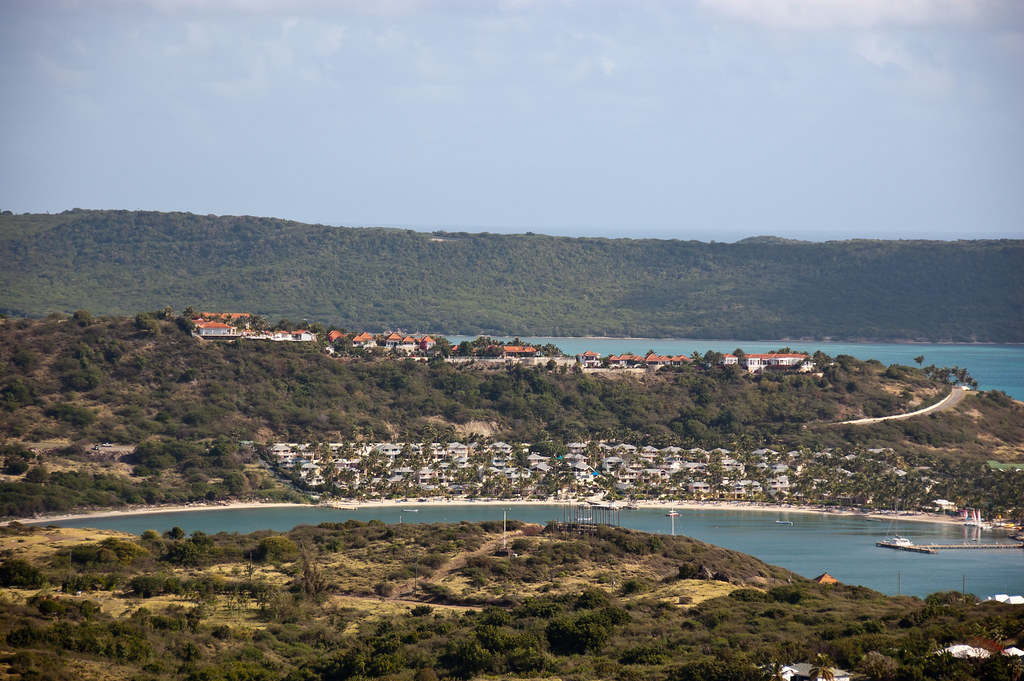
Above: The Drug Treatment centre, set up by Clapton. It is a private clinic, frequented by celebrities.
Just a little more history: In 1968, Antigua became an associated state of the Commonwealth, and in 1981 it was disassociated from Britain. The country was then led by what some describe as an elected family dynasty, with Vere Bird - the first prime minister - being succeeded in 1993 by his son, Lester Bird who retained the post until 2004.
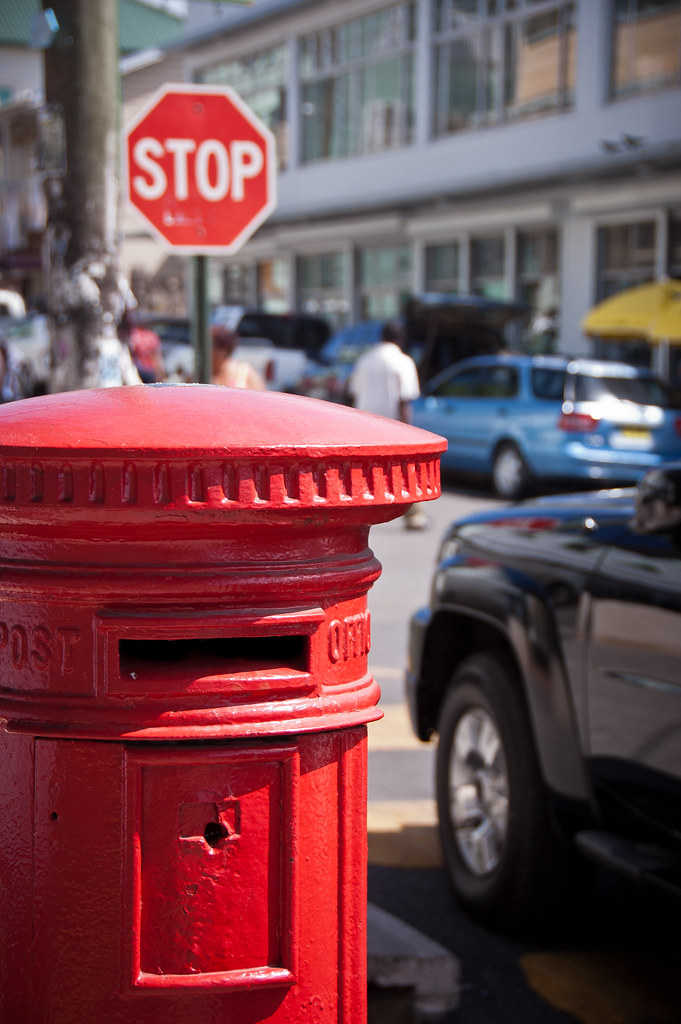
Above: Remnants of British sovereignty are dotted around the island.
I hope you enjoyed this detailed look at Antigua. I'll be back soon with more islands!

No comments:
Post a Comment